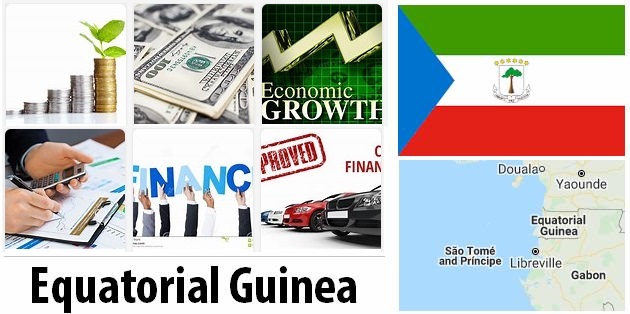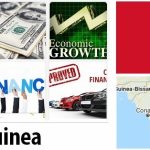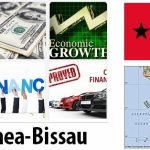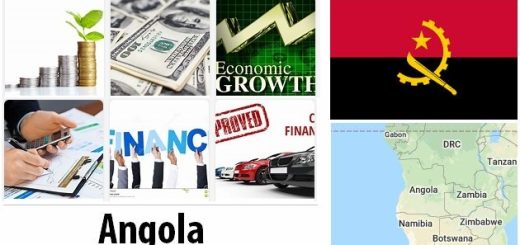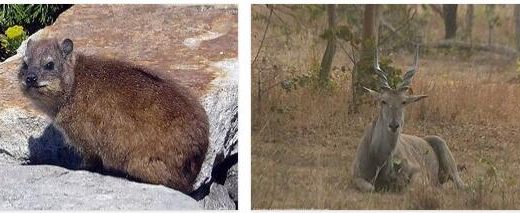Equatorial Guinea Economy Facts
Economical overview
Equatorial Guinea’s economy is almost entirely based on oil and to some extent natural gas. The economic significance of other activities, such as the service sector and agriculture and forestry, is negligible. However, attempts are being made to diversify the economy, as production on the country’s three major oil fields has reached its maximum level, while oil prices have fallen sharply.
The discovery of oil in the 1990s transformed Equatorial Guinea into one of the world’s fastest growing economies (however, it came from a bottom position with large deficits in the state budget and trade balance after decades of neglect) and for a long time growth was double-digit. Gross domestic product (GDP) per inhabitant increased from $ 370 in 1995 to over $ 20,000 in 2013. Between 2003 and 2012, GDP increased by an average of 7.6 percent per year. On paper, Equatorial Guinea was Africa’s richest country per capita.
- Countryaah.com: Major imports by Equatorial Guinea, covering a full list of top products imported by the country and trade value for each product category.
At the same time, the gaps in the country were larger than in almost any other country, as oil revenues largely went back to foreign, mainly US oil companies or into the ruling elite’s private bank accounts; corruption has been, and is, extensive. The sums that have gone down to the majority of the population are vanishingly small and the income from the oil has not led to any significant improvements for the ordinary citizen. Most people live in poverty and support themselves through cultivation for self-catering or black jobs of various kinds.
For their own use, the residents grow jams, sweet potatoes, cassava and bananas. On the fertile island of Bioko, the Spaniards grew cocoa on large plantations, but production has fallen sharply since independence in 1968. One reason is the uncertainty about who owns the land. A collaboration was initiated in the 2010s with the large cocoa producer Ghana to modernize the industry, which still employs many people in the population. The most important sales crop on the mainland is coffee. In 1995, almost half of the country’s exports accounted for timber, coffee and cocoa. Twenty years later, agriculture’s share of exports was less than one percent, while oil and natural gas accounted for 99 percent.
- Abbreviationfinder.org: Check this abbreviation website to find three letter ISO codes for all countries in the world, including GNQ which represents the country of Equatorial Guinea. Check findjobdescriptions to learn more about Equatorial Guinea.
Infrastructure investments
The state’s official oil revenues have so far mainly been focused on urban construction projects and measures to improve the country’s infrastructure such as roads, ports and airports and more. This has led to an upswing for the construction industry but has not resulted in as many jobs for the indigenous population, as the often foreign (Chinese, North African and more) companies hired for construction employ staff from their home country.
The high rate of growth in the economy was dampened in 2013, when the world market price of oil began to fall to finally more than halved, while at the same time the country was forced to reduce its oil production as the largest oil fields reached their peak. In addition, the ongoing crisis in the world economy contributed to reduced demand for oil and natural gas and also gas production shrank, despite a number of investments (see Natural Resources and Energy). As the economy was so dependent on the oil and gas sector, the result was that Equatorial Guinea was in a recession. In 2014, growth was projected to be negative (minus 2.1 percent) and the African Development Bank (AfDB) predicted an even larger decline of 8.7 percent. In order to be able to finance the remainder of the infrastructure investments initiated in accordance with the 2008 development plan (see below), it is necessary to utilize the bank reserves that have been allocated and are now at risk of being drained.
Attempts are being made to escape the great dependence of the oil and gas sector in the economy. In 2014, two well-attended symposiums were held in Malabo to draw foreign investment into five “new” sectors: agriculture and livestock, fisheries, mining and petrochemicals, tourism and financial services.
Already in 2008, however, a national plan for economic and social development, Plan Nacional de Desarrollo Económico y Social (PNDES), was adopted, which aimed to eradicate poverty by 2020 in a number of areas. The African Development Bank (AfDB) contributed a loan of € 2.9 million, which, in addition to poverty reduction, would primarily go to developing health care, fighting corruption and improving the transparency of government finances. However, the majority of the plan would be financed with oil and gas revenues and in a first phase (2008–2012) went mainly to various infrastructure projects: roads, ports, airports, as well as to the development and construction of cities (including the new capital Oyala).
aid Country
Despite oil revenues, Equatorial Guinea is still a country of development, albeit not to the same extent as before; several former donors refer to the (long) strong growth of the country’s gross domestic product, GDP. But international lending institutions such as the International Monetary Fund (IMF) and the World Bank have also largely withdrawn all assistance to Equatorial Guinea because of corruption and mismanagement in the country, and the United States because Equatorial Guinea does nothing about the problem of human trafficking. Spain is the largest contributor, followed by France, although French aid has fallen sharply in the 2000s. AfDB has also provided support in a number of areas. China has provided Equatorial Guinea with aid money in exchange for shares in the oil industry and the EU as well as Cuba has provided targeted support to health and education in particular.
Through the oil money, Equatorial Guinea has been able to pay off its relatively low external debt (but for example Spain and China have also made large debt write-offs). In recent years, the debt has been between 5 and 10 percent of GDP.
FACTS – FINANCE
GDP per person
US $ 10,174 (2018)
Total GDP
US $ 13,317 million (2018)
GDP growth
-2.9 percent (2018)
Agriculture’s share of GDP
2.3 percent (2018)
Manufacturing industry’s share of GDP
25.4 percent (2018)
The service sector’s share of GDP
40.5 percent (2018)
Inflation
0.9 percent (2019)
Government debt’s share of GDP
43.3 percent (2018)
Currency
Central African Franc
Merchandise exports
US $ 175 million (1996)
Imports
US $ 292 million (1996)
Current account
– US $ 344 million (1996)
Commodity trade’s share of GDP
62 percent (2018)
Main export goods
oil, oil products, timber
Largest trading partner
USA, China, France, Japan, Spain
